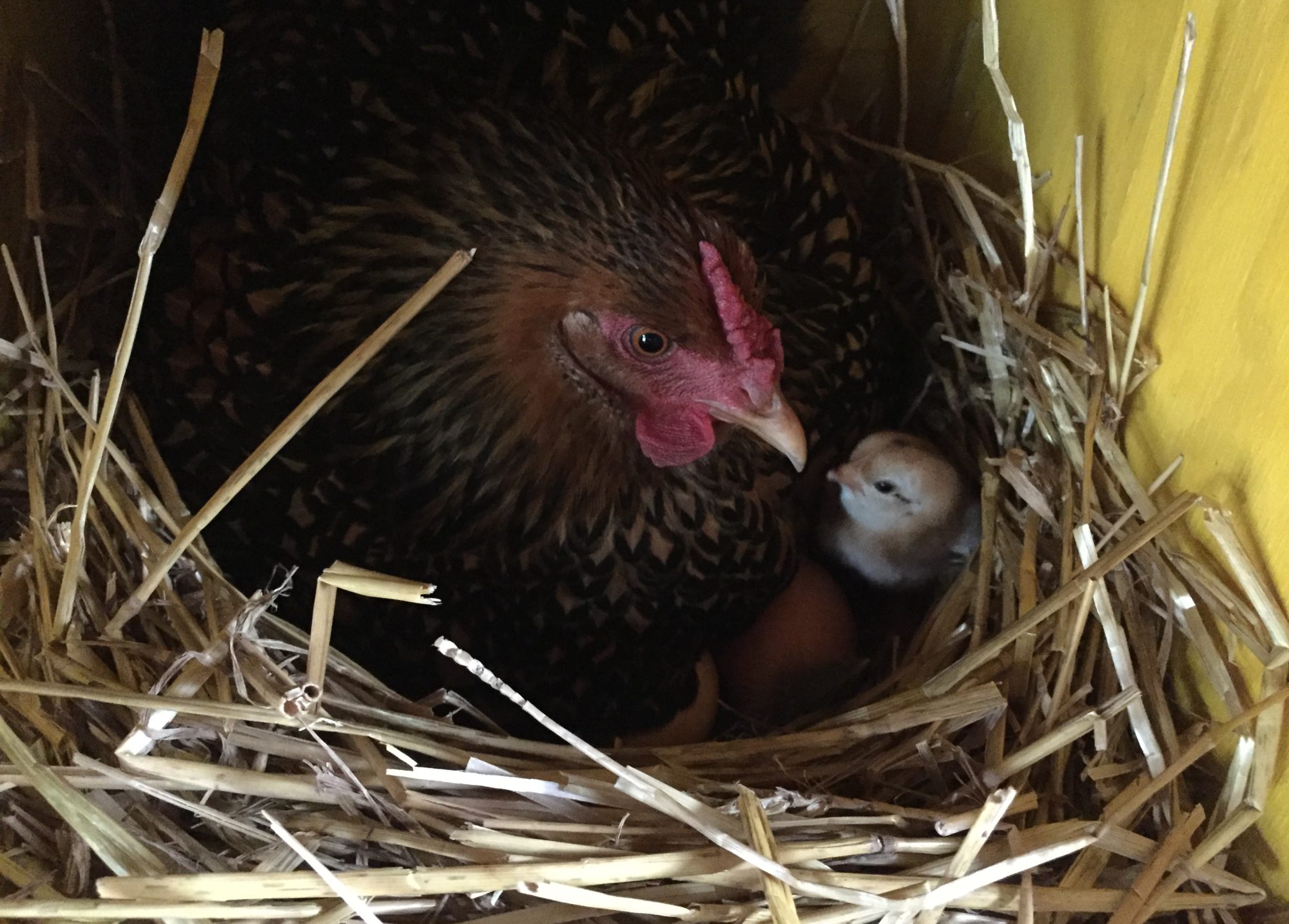We collect our eggs every day. Big deal, right? Why is that important? Well, it’s part of our quality control. We sell our eggs and we don’t want our customers to see anything unfamiliar when they crack one open. We have roosters, so we assume that every egg is fertilized (although it varies from about 85% in the spring to 65% in late summer). If the egg sits in the nest box, then nothing happens. But if a hen decides it wants to be a mommy and spends a couple of days sitting on the egg, chick development begins.
For a fertilized egg to begin development, it needs the conditions found directly under a sitting hen. That’s about 100 degrees Fahrenheit, and 60-70% humidity. After just 16 hours in those conditions, the first signs of development begins. After 24 hours, there are the beginnings of a vertebrae, nervous system, head, and eyes. It’s very tiny, weighing around .0001 grams, but it’s there.
By the end of the second day, a heart is beating. By the end of the third day, the nose, legs, and wings begin to appear. Again, it’s thousandths of a gram, but it’s not what’s for breakfast!

Did you ever leave for a weekend trip and left your birds in the hands of someone who SWORE they’d feed them and collect the eggs, only to return and hear “I forgot!”? If they didn’t collect the eggs, you might still eat them, but I wouldn’t recommend selling or giving them to anyone. Occasionally we find a clutch of eggs hidden in the barn or under some plants. We’ll eat barn eggs if they’ve been kept dry, but we first mark them to make sure they don’t wind up in a carton for sale. Eggs found outside get wet from rain or morning dew. Water destroys nature’s protective sealant, called the cuticle or bloom, which allows bacteria to enter the egg. Those eggs get destroyed.
Speaking of chick development, did you ever wonder how a chick gets oxygen when it’s covered in a hard shell? Here are two words that might be new to you: allantois and chorion. The allantois is a membranous bag attached to the embryo’s belly and lies close to the inner surface of the egg shell. The allantois develops on about Day 4, and fuses with another membrane which surrounds the chick and yolk called the chorion. If you’ve ever candled a developing egg and saw blood vessels just under the shell, you’re looking at this fused “chorioallantoic” membrane.

Blood Vessels Seen During Candling
The chorioallantoic membrane has a network of blood vessels within it. The membrane is against the inner surface of the porous shell, allowing gas exchange to occur. Oxygen diffuses through the egg shell, through the capillaries in the membrane, and into the blood. Carbon dioxide exits the shell, only in reverse order. The chick’s beating heart pushes blood through its body as well as the chorioallantoic membrane. The allantois stores nitrogen-containing waste. When the chick hatches, it leaves these membranes behind, still attached to the shell.

Hopefully that wasn’t too much learning in one day. There won’t be a test on the chorioallantoic membrane. But remember to collect your eggs daily. And if you find one where it shouldn’t be and don’t know how long it’s been there, toss it!

